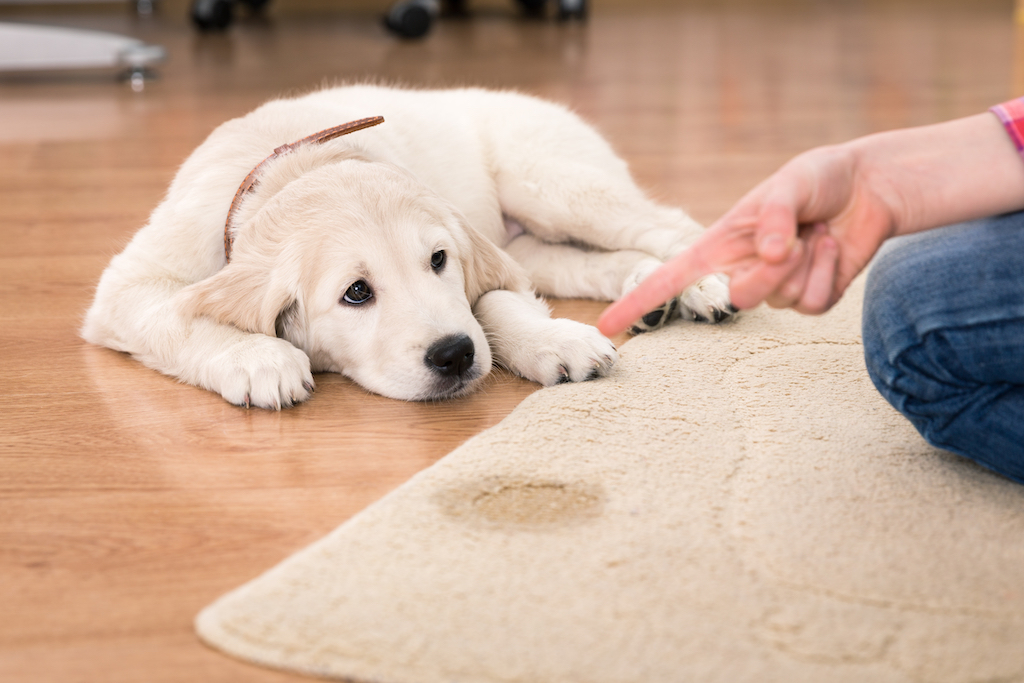
One of the stages of raising a puppy is to teach him to use the toilet on the street. With sufficient attention and competent actions of the owner, the puppy gets used to emptying the intestines and bladder during a walk. But it happens that the dog, even after coming out of puppyhood, continues to make puddles at home.
Below we will analyze what can be the reason that an adult dog or puppy pees at home, what you need to pay attention to in its behavior and health, and how to wean it from such behavior.
Why Do Dogs Pee in The House?
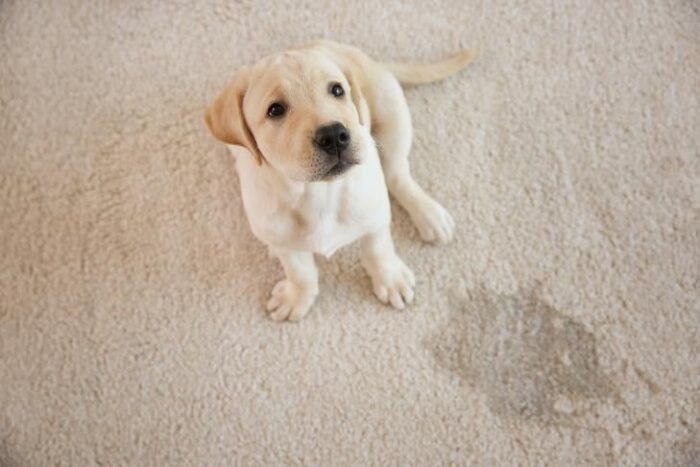
Hygiene and cleanliness in the house is one of the issues that concerns future owners when they decide to get a dog. In addition to washing wool, brushing teeth and antiparasitic treatment of a pet, an important aspect in terms of cleanliness and hygiene is accustoming to walking.
As a rule, a dog goes through the following stages of its relationship with the toilet during its life:
Newborn puppies urinate and defecate in the same place where they eat, sleep, play, in close proximity to the mother. In the first days of life, the mother helps to empty the bladder and intestines by active licking of the abdomen (similar to massage).
When puppies walk confidently and are able to move around in a larger area (compared to a birthing and newborn arena), you will notice that they usually move away from the feeding and sleeping area to relieve themselves. This trend is then used by the owners to teach them to walk on a pee pad.
As a rule, a puppy is taken to a new home at the age of two months, when not all vaccinations have been done, so it is dangerous to walk with him. During this period, there is an accustoming to go to the toilet on a special pee pad.

After the quarantine associated with the completion of the vaccination cycle, the puppy begins to walk on the street. Most often, he quickly learns to walk on the grass and does it with pleasure.
However, the moment when the puppy begins to urinate exclusively on the street does not come quickly: the dog cannot immediately stop leaving puddles in the house, it takes time to wean the pet from the potty pad and reinforce the behavioral stereotype to toilet on the street.
Depending on how often the puppy is walked, whether his desire is foreseen, whether he is praised for successful walks, the training period can range from a couple of months to a year.
Understanding all these natural stages, the owners need to be prepared that cleaning up after the puppy in the house is an inevitable process. And it is connected with the fact that a puppy cannot go outside until a certain age, and then it takes time to develop a habit and mature.
Potty Boddy – Pet Products Designed to Keep Your Home Clean
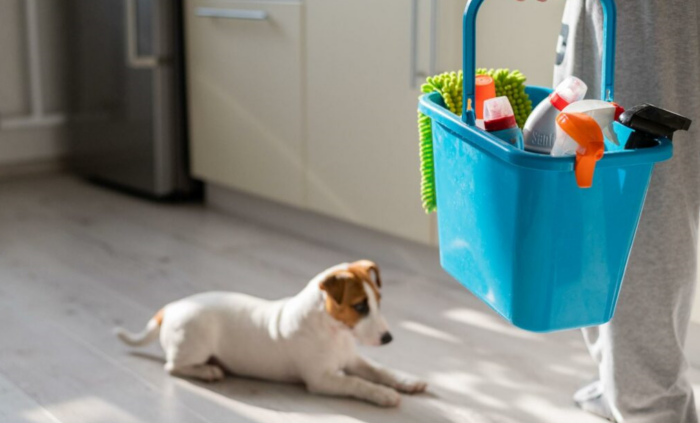
Sometimes the natural formation of toilet habits on the street is hindered by some factors:
Anxiety of Separation from The Owner
If the dog feels insecure and anxious when the owner is away for a long time, this can develop into any behavioral disturbances – from damaging furniture to uncleanliness.
If anxiety does not allow the dog to fall asleep during the absence of the owner and as a result puddles appear, then you can accustom the pet to the cage: perceiving it as his refuge, he, firstly, will feel calmer, and, secondly, he will not urinate in her (dogs are generally clean animals, prone to toileting away from places where they eat, sleep and rest).
Stress
Any deviations in the behavior of the pet must be noticed and analyzed. Signs of stress can be: a change in the place and sleep pattern, refusal to eat, the appearance of barking or whining, attempts to gnaw your limbs or tail, and much more.
In some individuals, stress blocks the development of new skills and good manners, or leads to the return of the habit of making puddles at home.
Incorrectly Chosen Walking Schedule
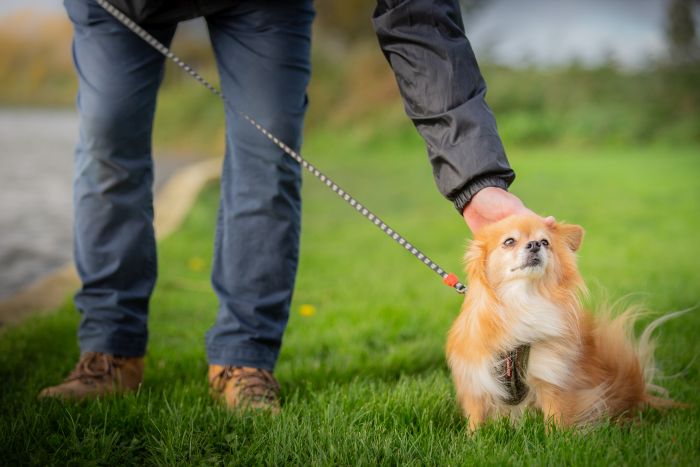
It is necessary to strive to ensure that the number of emptying of the bladder on the street exceeds the number of puddles in the room. To do this, the puppy should be taken for a walk after each feeding (which should be 3-4, depending on age), after each awakening (and this is also quite a few times a day), and also whenever the puppy went to smell the place where usually goes to the toilet.
Thus, up to 8-10 walks can take place per day. It is clear that not all owners have such an opportunity – in this case, accustoming will take longer.
Discover a list of essential items for dog walking that will help make your walks more enjoyable and efficient.
Diseases of The Genitourinary System
Diseases of the genitourinary system (for example, cystitis), which lead to uncontrolled urination and frequent urge to urinate.
The Dog for Some Reason Began to Drink More
- Hot weather, high room temperature;
- Increased physical activity;
- Stomach problems (ranging from gastritis to a foreign body) can also cause your pet to drink more to reduce uncomfortable stomach pain and nausea.
Whatever the reason for excessive water intake, the dog will increase the need to urinate, which is fraught with unplanned puddles in the house.
How to Stop a Dog from Going to The Toilet at Home?
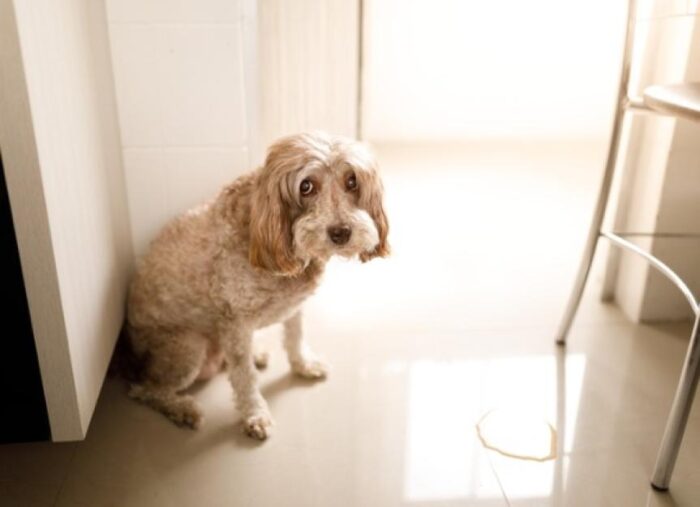
There are two main ways to work with a pet’s behavior, including weaning unwanted behavior:
When it comes to weaning from something (nibbling furniture, jumping on guests, chasing a cat or going to the toilet in an apartment), then the surest strategy will not be prohibitions and punishments, but accustoming to the desired behavior.
If you do not provide an alternative behavior pattern, but simply block actions, then tension will begin to accumulate, stress may arise, the dog will begin to look for familiar ways to calm down, but will not be ready at this moment to learn new things. That is why shaming, scolding and punishing if puddles are found in the house is ineffective.
It is much more productive to catch the moment when the dog is ready to empty the bladder (or when it has already begun to do so) and try to stop the process: call the puppy outside or take the puppy in your arms and take it outside, distract it with a treat or a squeaky toy. Often many dogs stop their action and continue it already on the ground or grass.

Form a habit. By fixing a certain sequence of actions in memory, you can develop the desired reactions. For example, if immediately after waking up the dog, without giving it the opportunity to make a puddle at home, take it for a walk, it will get used to the fact that toilet chores should be done only on the street.
How to prevent a dog from emptying its bladder while the owner is getting dressed? You can ask someone from the household to distract the pet, you can command him to “lie down” and make sure that he does not get up, you can distract him with treats.
When the pet goes outside and urinates, it is necessary to praise him and give him a treat. Of course, habit formation requires repetition – it should be daily sequences of actions.
Conclusion
In summary, the surest strategy is not to unlearn per se, but to replace one behavior with another.














